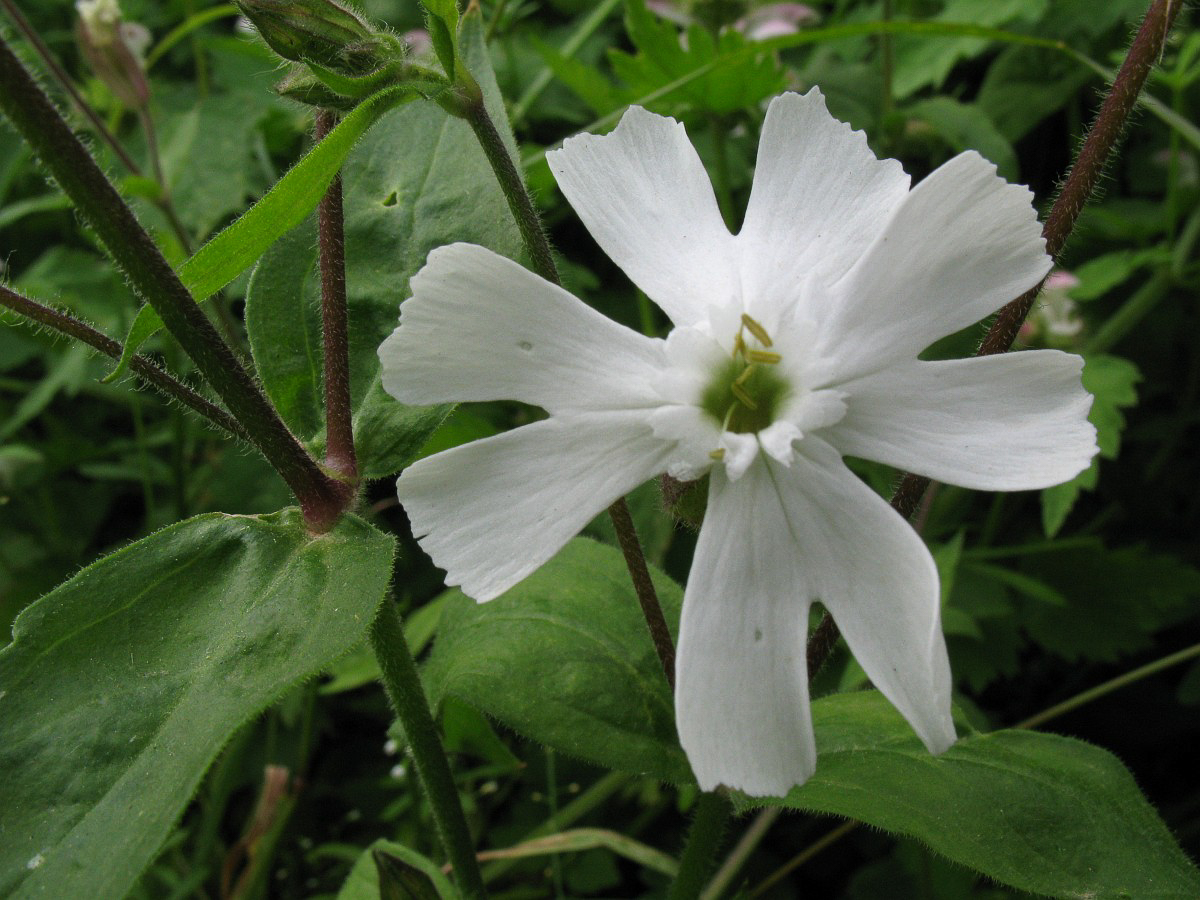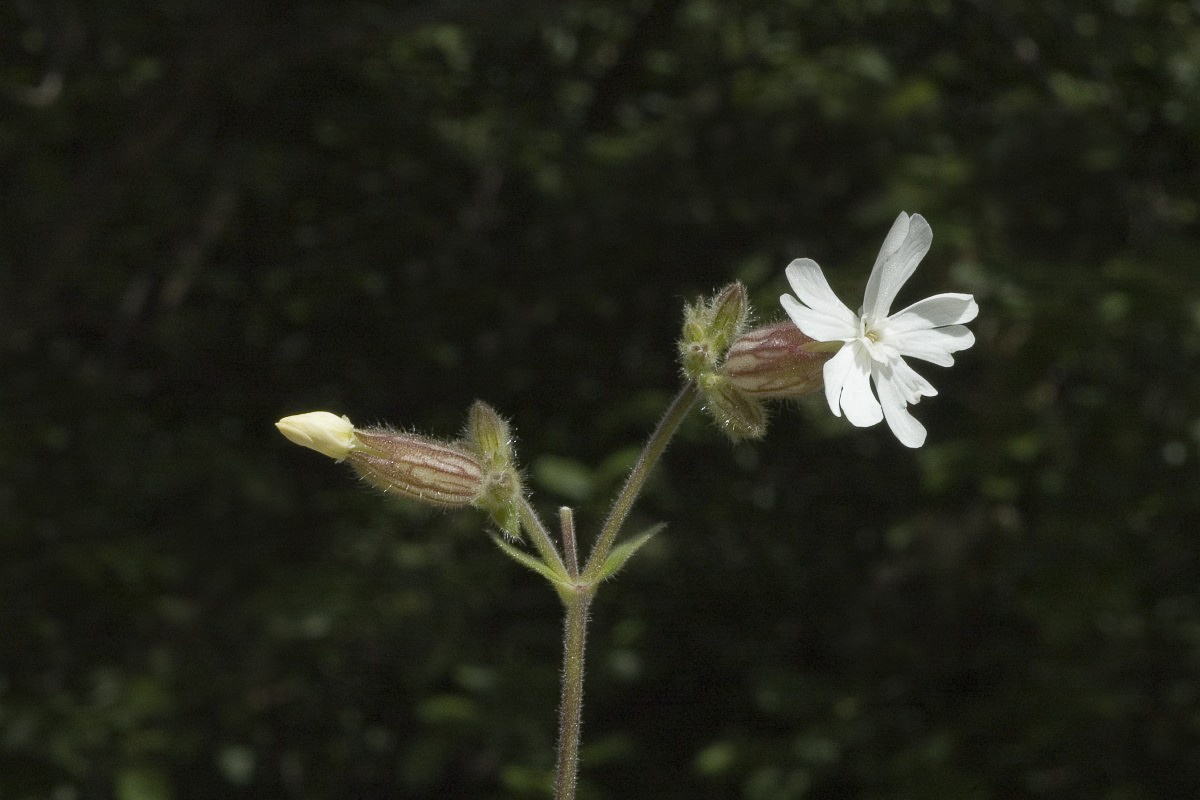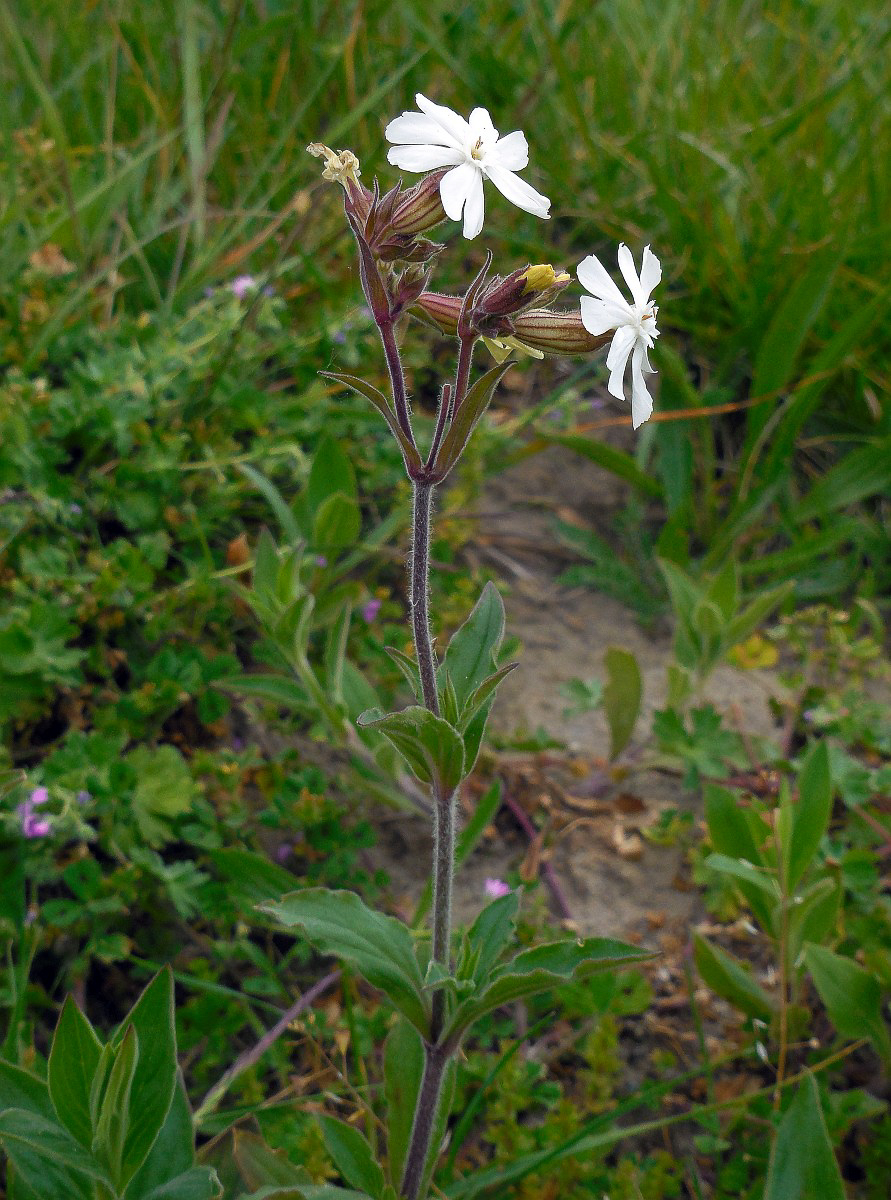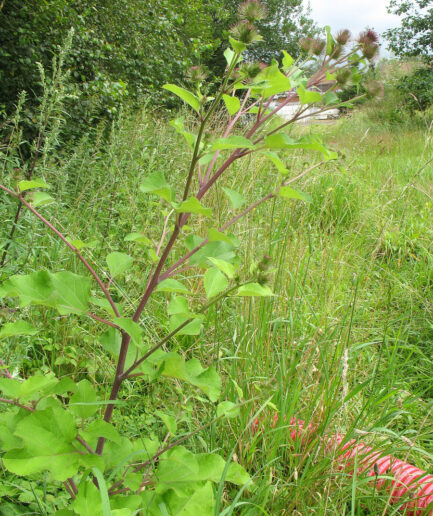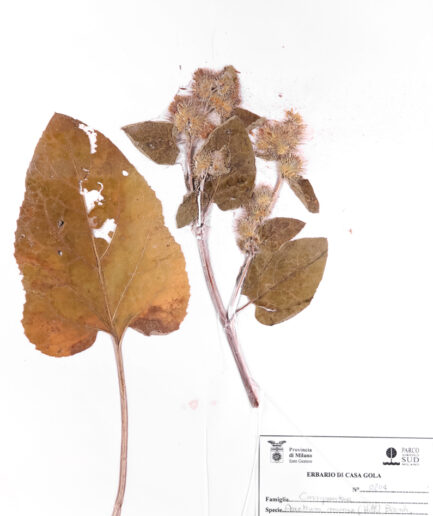White Campion
Scientific name: Silene latifolia Poir.
Family: Caryophyllaceae
MORPHOLOGY
Habit and Size: Biennial or perennial herbaceous plant, with appressed pubescence and a taproot, height 30-80 cm.
Stem: Erect, branched stems, villous at the base and viscid-glandular at the apex.
Leaves: Elliptic-lanceolate leaves with an acuminate tip, traversed by 3 veins, opposite, petiolate at the base, sessile on the stem, often glabrescent, entire margins, often accompanied by a bundle of bracteal leaves at the axil.
Flowers: Sparse dichasium inflorescences with unisexual flowers: male flowers have a tubular-campanulate calyx with 10 longitudinal veins, female flowers have a tubular-ovoid calyx swollen at half-length and constricted at the apex, with 20 longitudinal veins. Both have a brownish-red hairy calyx with acute, often acuminate teeth, 2/3 the length of the tube. The corolla consists of 5 glabrous, whitish petals often tinged with pink, bilobed to half their length. Blooms from April to December.
Fruits and Seeds: The fruits are conical capsules with 10 teeth that open at maturity, containing numerous kidney-shaped, gray-brown seeds with tubercles, convex faces, and back.
DISTRIBUTION AND HABITAT
Widespread throughout Italy, it infests crops, grows in ruins and fallow lands, fields, gardens, along roads, and near manure heaps, from 0 to 1,900 meters.
USE
Although not considered toxic, this plant contains saponins, so quantity should be moderated! Young leaves can be used in soups or boiled and sautéed. The whole plant is used in the preparation of the “minestrella,” an ancient and very simple soup made from 27 herbs, often served with cornbread. The root can be used, after boiling, as a soap substitute.
INTERESTING FACTS
In some parts of England, due to its wide distribution in cemetery areas, this flower is called the “Flower of the Dead.”
Photo: licensed free of charge from Saxifraga and Ed Stikvoort, Rutger Barendse, Jan van der Straaten




